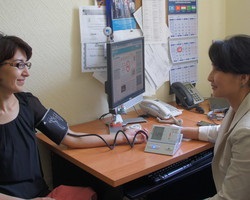
The World Health Organization’s Tobacco Knowledge Summary underscores the necessity of reducing tobacco smoke exposure to alleviate the burden of chronic obstructive pulmonary disease (COPD). They stress the need for public health interventions to combat this issue.
Highlighting smoking as a primary risk factor for COPD, the report emphasizes its role in airway inflammation and remodeling, responsible for approximately 70% of global COPD cases. The summary broadens the spectrum of tobacco exposure, including not just conventional smoked products but also smokeless tobacco, heated tobacco products, and electronic nicotine delivery systems. The authors warn against the misconception of certain alternatives like hookahs or water pipes as safe, stating they pose similar risks to lung health as cigarettes.
Moreover, the document addresses the escalating risk of COPD associated with new e-cigarette products, citing a study that reveals a 75% increased risk of COPD among current e-cigarette users compared to non-users.
Quitting smoking not only improves COPD but also reduces the likelihood of developing related conditions like cardiovascular disease and type 2 diabetes, the authors affirm.
Delving into the mechanisms, the report explores how inhaled particles from tobacco smoke deposit in the airways, potentially leading to COPD. Research indicates the involvement of extracellular vesicles in the development of lung disorders such as COPD, with cigarette smoke significantly impacting this process. Studies in both mice and humans exposed to cigarette smoke demonstrated the potential for airway extracellular vesicles to induce rapid lung damage when transferred to unaffected mice, offering a new model for COPD research.
To address these concerns, the World Health Organization stresses the importance of public education, restrictions on tobacco use, and tailored interventions for smoking cessation and COPD management. They advocate for population-wide interventions, including counseling for tobacco users, accessible quit lines, pharmacological aids, and technological support such as quit tobacco mobile apps and chatbots.
The report also emphasizes safeguarding youth from tobacco use by regulating products and exposing manipulative marketing tactics employed by the tobacco industry.
Dr. Dharani K. Narendra from Baylor College of Medicine highlights the article’s insights into various tobacco exposures’ role in COPD development, especially the concerning association between electronic nicotine delivery systems (ENDS), heated tobacco products, and COPD. She stresses the significance of this information for physicians aiding patients in smoking cessation.
Moving forward, Dr. Narendra underscores the necessity for more targeted interventions, specific to populations, to effectively reduce the burden of COPD. The study conducted by Madison and colleagues received support from various institutes and organizations, underlining the multifaceted efforts addressing COPD and tobacco-related concerns.










